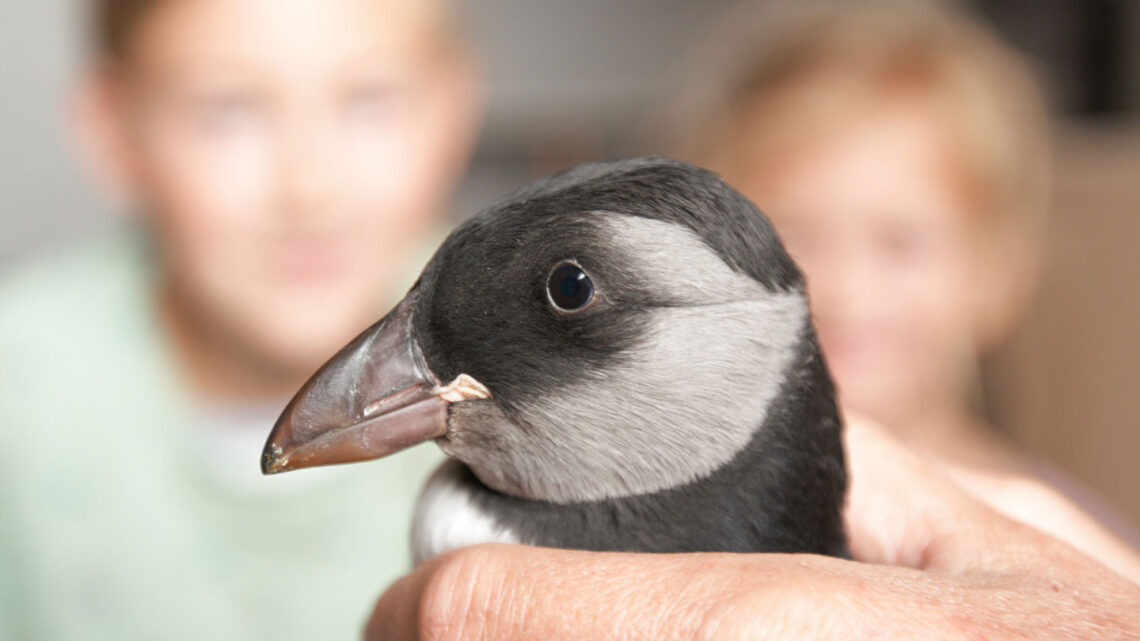When baby Atlantic puffins in Iceland venture out of the cliffside burrows where they had hatched, they look for the light of the moon. It will guide them to the sea. But nearby town lights sometimes confuse them. This leads many to make wrong turns en route to the ocean.
A community-based Puffling Patrol searches for and rescues such pufflings that have gone astray in town.
These chicks — and many of the colony’s adults — are helping scientists who monitor and study the birds’ largely mysterious lives at sea.
The range of Atlantic puffins spans the North Atlantic — from the coasts of Canada and the northeastern United States to Greenland and Russia. These birds spend most of their lives at sea.
Iceland houses the breeding site of the world’s largest Atlantic puffin colony. It’s on Heimaey, a small, rocky island. Here, adult puffins pair up and spend the summer laying and incubating eggs, then raising a single chick.
Nesting pairs of puffins prefer grassy seaside slopes above rocky cliffs, such as the one seen above this harbor in Heimaey. Each breeding pair occupies its own burrow. It’s as if the cliff were a huge apartment complex.


For about six weeks, puffin parents care for their babies. They bring sandeels and other small oceanic fish to the pufflings. They also fend off predators, such as seagulls. The downy fluff around this puffling’s neck (right, above) shows that it’s not yet ready to fledge (fly off).
By late August and September, the young pufflings are mature enough to live on their own. Over four to five weeks, tens of thousands of young birds ready themselves to fledge. To hide from birds of prey, they’ll leave their burrows in the dark of night.
Their instinct has always been to…
Read the full article here





